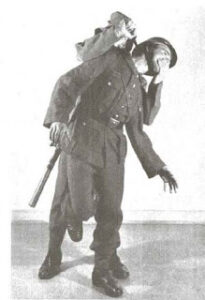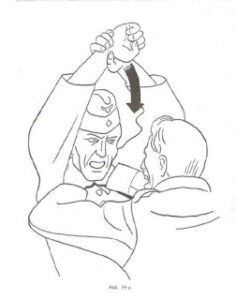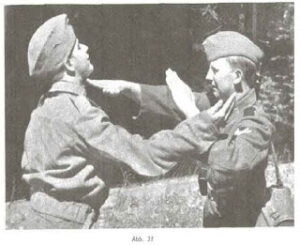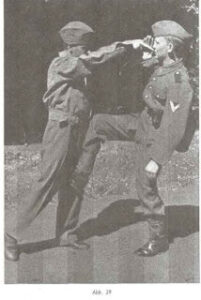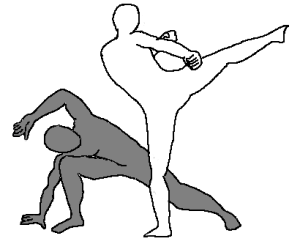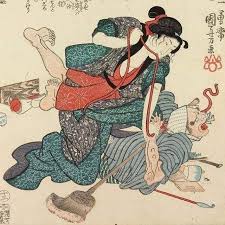To further look at this idea of being scientific, let us look at a technique shown in many self-defence books. Even the usually very practical W.E. Fairbairn shows this one in several of his works. The scenario is that one of your arms has been grabbed by you foe with both of his hands. You make a fist and pull on this fist with your other hand, dropping or raising the elbow of your grabbed arm to exert pressure on your attacker's thumbs, and break free.
Categories
Scientific Self-defence
A term that wartime combat manuals seem to be very fond of is “scientific”. Many of them claimed to teach a scientific method of self-defence. Science is an often misused term. Science is basically a tool for collecting and verifying knowledge, usually by means of observation and experimentation. Such observations and experiments tend to use proven rules to reduce sources of error and give us a greater confidence in the conclusions we draw. When we are trying to find the cause of something we attempt to eliminate as many parameters as possible, and while we are testing something we try to subject it to as many variables as we can.
Many years ago I knew a couple who had studied Aikido together. After a while he lost interest but his girlfriend continued to take classes. Often she would return home with some new technique she had learnt and tried it out on her boyfriend. It seldom worked. It had worked fine when sensi had demonstrated it, she had got it to work with her partners in class, but it didn’t work on the boyfriend. He didn’t know what was supposed to happen. In any situation that involves several humans there are social conventions, some of them conscious, some of them subconscious. Showing up sensi or the Drill Sergeant is not a good idea. There is also peer pressure. In a class there is often a level of subconscious compliance. Most of us don’t want to act like dicks and sabotage our partner’s technique. In a real self-defence situation your opponent is going to be trying to disrupt you in every way he can come up with.
The theory behind this is sound, but does it work if we eliminate the factor of practice partner compliance? The obvious way to do this would be to give the student grabbing the arm a real incentive not to lose. Place a really substantial wager on the outcome and see if the technique can still work. To further increase the accuracy of our testing try the technique with a wider variety of individuals of varying body types, ages and genders.
The next factor we need to consider is that of realism. How likely is it that this attack will actually be used. Why is the attack grabbing your arm with both of his hands, and what is he trying to achieve by doing this?
We also need to consider efficiency. Even if the technique will work most of the time, is it the best technique to use. Is there something simpler and possibly more effective the defender can do. The attacker has both his hands occupied but has left you with one of your hands free. Various strikes can be made to his arms or head, and my book details some of the vital areas where these can be most effective.
My message behind this post is that when considering self-defence beware of the compliance factor and try to be truly scientific. As you test techniques have your training partner try to come up with practical counters. You have to be fair and realistic with this. If you are trying at technique at a slow speed he cannot respond with a full speed move.
Let us consider another self-defence scenario, one rather more likely than the two-handed wrist grab. Kicking is often advocated as a practical counter to an opponent with a knife. Roll up a magazine to use as a knife and practice. One student tries to land a kick on a realistic target, the other tried to cut or stab him with the magazine. What types of kick work? Can you execute a particular kick from the inside gate or do you need to be on the outside? One hypothesis is that roundhouse, side thrust and front thrust kicks are the only practical attacks but must be directed against the front leg from the knee down. How do different stances of the knife-user affect this?

